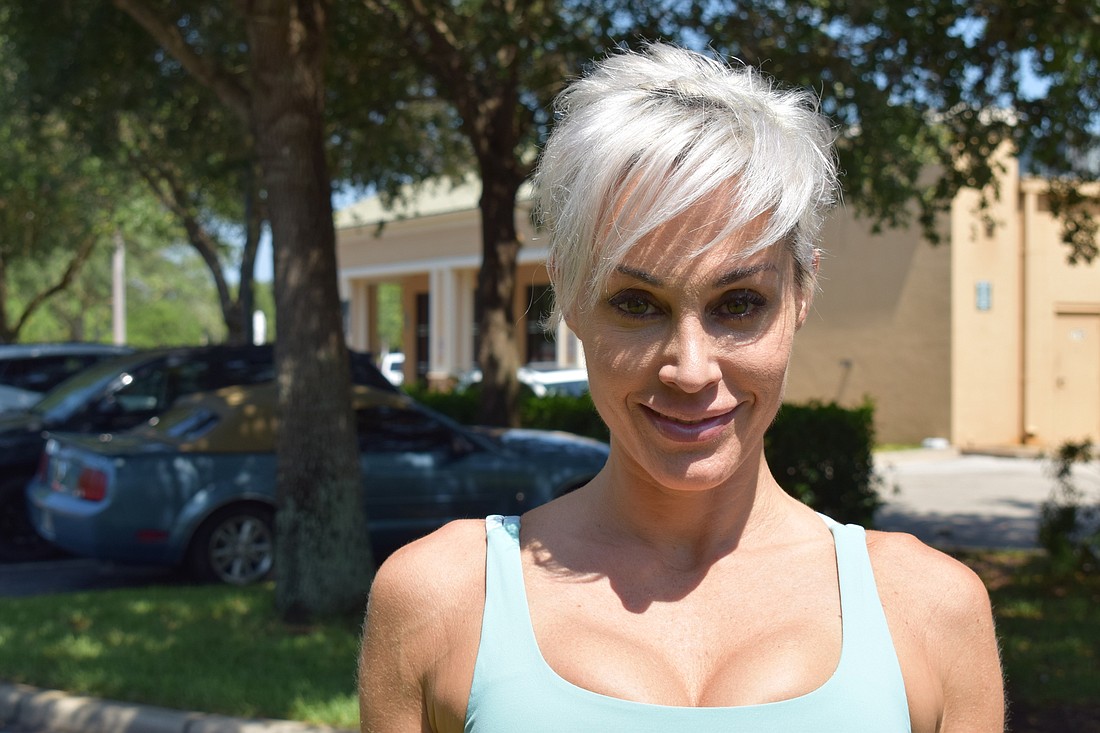- January 14, 2025
-
-
Loading

Loading

Marina Bourantonis started her yoga journey when she was 15 with the intention of soothing her emotional pain.
But after several accidents, it became a way to soothe her physical pain. By stretching and staying limber, Bourantonis noted that increased flexibility led to an increased feeling of wellness.
Now 41, Bourantonis owns the Thavma Yoga Studios in Sarasota and Lakewood Ranch with her husband, Athanasios. Through the practices she offers, she emphasizes improving flexibility while also building strength.
Few might think of stretching as a “workout,” but that doesn’t make it any less important than aerobic exercise or lifting weights.
“That yin and yang is where people should be playing,” Bourantonis said. “Extremes in anything aren’t good.”
As we age, we naturally become less flexible, said Dr. Laura Ottaviani, a rehabilitation specialist with Coastal Orthopedics. Although flexibility focuses on muscle tissue, tight muscles over time can lead to problems with joints and range of motion, which may eventually lead to pain.
“There is a lot of very complex muscular dysfunction that can lend itself to bone pain and muscle pain, especially as we get older, because we get a little more sedentary,” she said. “We can become quite stiff, and we don’t realize what’s happening.”
Although Ottaviani is usually treating people because they’re already experiencing pain, she encourages all of her patients — particularly those in their 20s, 30s and 40s, to establish an exercise routine that includes flexibility work.
“It might not be something your body needs now, necessarily,” she said, but as patients get older, “It’s only going to benefit you.”
Ottaviani often recommends yoga, she said, though she cautioned that older patients experiencing medical problems should see a doctor or specialist and work with them to establish an exercise routine specific to their body’s needs to avoid damage.
Bourantonis said those interested in yoga should find a qualified instructor and take a class in person, especially first-timers. That way, the instructor can check the person’s stance and offer modifications of stances to best suit the person.
She also said yoga can offer emotional benefits, too, by helping to release tension.
“We always feel like we’re not enough,” she said. “We need to learn to love ourselves and accept ourselves.”
For newcomers who struggle to get into yoga — for physical limitations of for just a lack of interest — Bourantonis said to be persistent, and they will get hooked.
“Don’t let your limitations discourage you. Give it another try,” she said.
Cat/Cow: On all fours, center your knees under your hips and your wrists under your shoulders. Let your belly drop, lifting the head toward the sky as you inhale. Exhale, arching your back up and letting the head drop.
Side stretch: With feet slightly apart, raise your arms overhead and lean to the side, feeling a stretch in the side body. Be careful to keep your ribs lifted and not to crunch and cave in on yourself.
Cross-legged twist: In a seated position with the legs crossed, place one handto the opposite knee. Keeping the back straight, place the other hand at the base of your spine and twist away from the hand on the knee, drawing a line with the chin to look over your shoulder.
Seated stretch: From a seated position with legs in front of you, hinge forward at the hips. Bend the knees as generously as necessary to keep the back straight and shoulders back and down.
Puppy dog: From all fours, with knees centered under hips, walk the palms forward until the arms line up with the ears and rest the forehead on the floor.